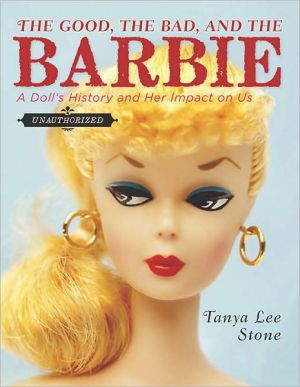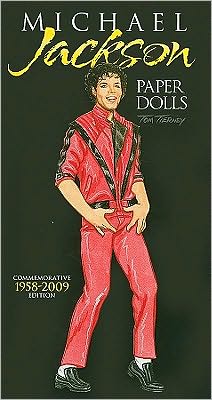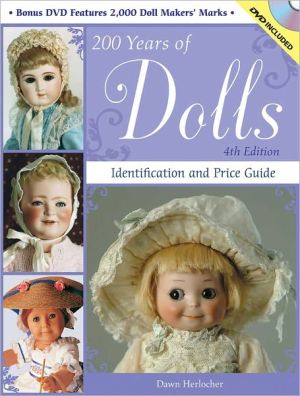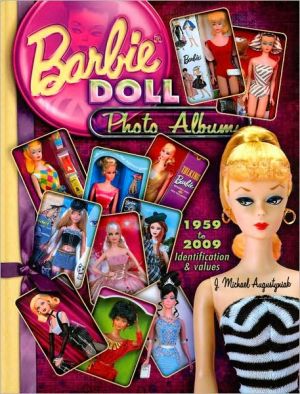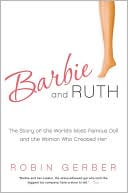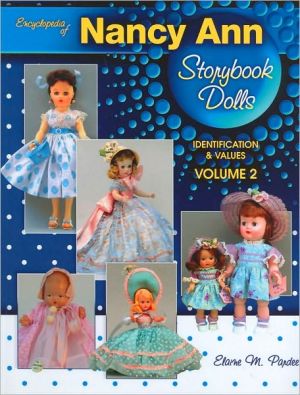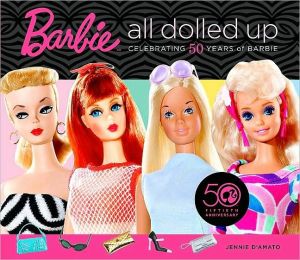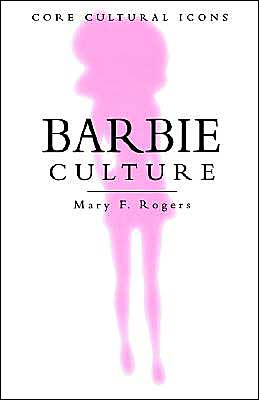The Good, the Bad, and the Barbie: A Doll's History and Her Impact on Us
During her unparalleled fifty-year history, Barbie has been the doll that some people love-and some people love to hate. There's no question she's influenced generations, but to what end? Acclaimed nonfiction author Tanya Lee Stone takes an unbiased look at how Barbie became the icon that she is, and at the impact that she's had on our culture (and vice versa). Featuring passionate anecdotes and memories from a range of girls and women, a foreword by Meg Cabot, and original color photographs,...
Search in google:
During her unparalleled fifty-year history, Barbie has been the doll that some people love—and some people love to hate. There's no question she's influenced generations, but to what end? Acclaimed nonfiction author Tanya Lee Stone takes an unbiased look at how Barbie became the icon that she is, and at the impact that she's had on our culture (and vice versa). Featuring passionate anecdotes and memories from a range of girls and women, a foreword by Meg Cabot, and original color photographs, this book explores the Barbie phenomenon in a brand-new light.Publishers WeeklyOn the heels of Barbie's 50th anniversary in 2009, Stone (Almost Astronauts) delivers a cultural-history-as-biography of Barbie, "arguably the most famous doll in the world." Really two biographies in one, the book explores the lives of both the doll and her inventor, "self proclaimed tomboy" Ruth Handler. The daughter of Polish immigrants, Handler helped found Mattel, and Barbie's 1959 introduction wasn't far behind. Stone discusses Barbie's cultural relevance at length, from her numerous careers and the many races and nationalities she's represented to debates about her effect on girls' body image and even her resonance in the art world. Meg Cabot, who contributes a foreword, makes it clear what side she's on: "How Barbie looked was never the issue.... hat she taught us was that, like Barbie, we could be anything we wanted to be." Filled with photographs of Barbie dolls past and present as well as quotes about her from nationally known figures and children alike, Stone's fascinating and balanced account reveals a toy of almost unmatched influence. Ages 12-up. (Oct.)
\ Publishers WeeklyOn the heels of Barbie's 50th anniversary in 2009, Stone (Almost Astronauts) delivers a cultural-history-as-biography of Barbie, "arguably the most famous doll in the world." Really two biographies in one, the book explores the lives of both the doll and her inventor, "self proclaimed tomboy" Ruth Handler. The daughter of Polish immigrants, Handler helped found Mattel, and Barbie's 1959 introduction wasn't far behind. Stone discusses Barbie's cultural relevance at length, from her numerous careers and the many races and nationalities she's represented to debates about her effect on girls' body image and even her resonance in the art world. Meg Cabot, who contributes a foreword, makes it clear what side she's on: "How Barbie looked was never the issue.... hat she taught us was that, like Barbie, we could be anything we wanted to be." Filled with photographs of Barbie dolls past and present as well as quotes about her from nationally known figures and children alike, Stone's fascinating and balanced account reveals a toy of almost unmatched influence. Ages 12–up. (Oct.)\ \ \ \ \ Children's Literature - Danielle Williams\ Love her or hate her, everyone recognizes Barbie on sight. She is an American icon, known the world over and coveted by thousands of children and adults. Created by Ruth Handler as a doll her older daughter could dress up and play with, Barbie reached stardom status quickly, and just as quickly became hated by parents who thought Barbie was too grown up for little girls. Barbie earned hatred just as quickly from people who found her beauty and girlish storyline a detriment to the feminist movement that was gaining momentum the same time that Barbie burst onto the toy scene. Stone takes an unapologetic look at Barbie's life, documenting the changes in Barbie through the years, her impact on society and the numerous controversies surrounding her existence. Numerous testimonies from those who love and hate Barbie bring personal insight into the life of this doll that has made such an impact on society. Black and white photos chronicling Barbie's life are peppered throughout the text and a full-color spread of Barbie through the years is included in the middle of the text. Reviewer: Danielle Williams\ \ \ School Library JournalGr 6 Up—In the prologue, Meg Cabot describes her desire for a Barbie and her mother's reluctance to purchase one, basically summing up the conflict surrounding the doll since its introduction in 1959. Readers learn about Mattel Toys and the background behind Barbie's concept and development, how it was a solution for girls who wanted to imagine adult roles rather than just play mother, and details about inventor Ruth Handler. But more than that, Stone reveals the pathos behind so many relationships of girls with Barbie: those who cherished her and those who were negatively influenced. Was she a destructive role model or just a toy? Experts disagree. In this balanced overview, both sides of the quandary are addressed. Barbie's different roles, graduating from nurse to surgeon, stewardess to pilot, and always a woman of her own means, reflect societal changes over the past 50 years as well. Numerous black-and-white photos feature the doll in her various incarnations, while eight center pages deliver color versions as well as images of Barbie-inspired art. Inset quotes appear on a Barbie handbag icon. The author maintains her signature research style and accessible informational voice and includes extensive source notes and bibliographical information.—Janet S. Thompson, Chicago Public Library\ \ \ \ \ Kirkus ReviewsSibert Medalist Stone tantalizes with her brief and intriguing survey of Barbie. She begins with the history of Mattel, started by self-made businesswoman Ruth Handler in the 1940s, and moves onto materialism, body image, portrayals of ethnicity, nudity, taboo and art. Direct quotes from women and girls showcase the variety of feelings that Barbie engenders, and the author weighs in occasionally and effectively to show that though Barbie is often "just a doll...We have...helped make her the icon—and subject of controversy—that she is." That authorial "we" often wavers between a universal and one that is clearly adult, andshe herself suggests that adults are most concerned with Barbie as an idea, while kids engage with her as a doll, indicating an audience of teens and adults rather than children. The striking cover, open design with numerous photographs and collegial voice will appeal to younger readers, though, and if they overhear something of a conversation pitched to adults, they'll just take it as they can use it--asthey already do with Barbie. (author's note, source notes, bibliography, index) (Nonfiction. 11 & up)\ \
